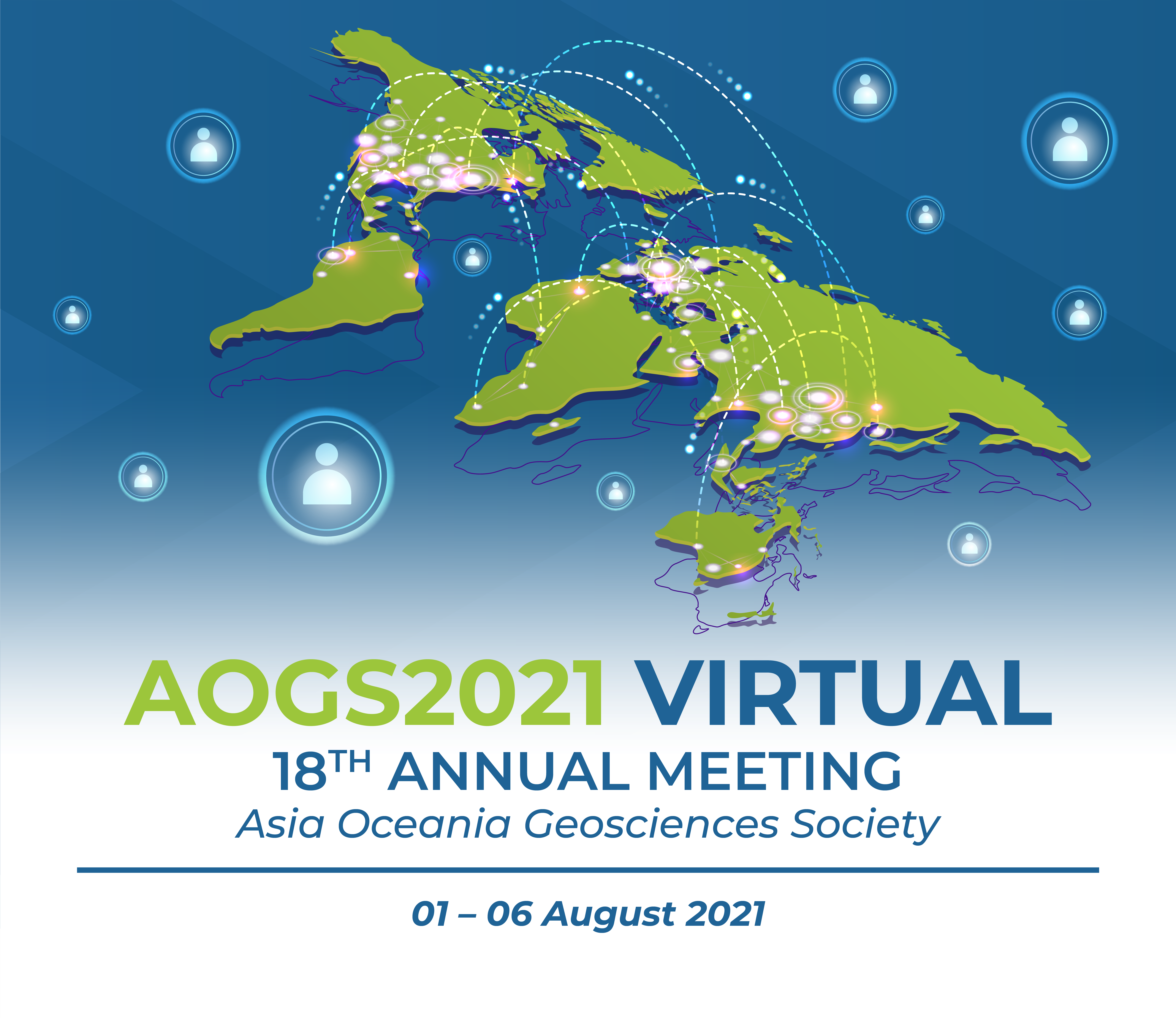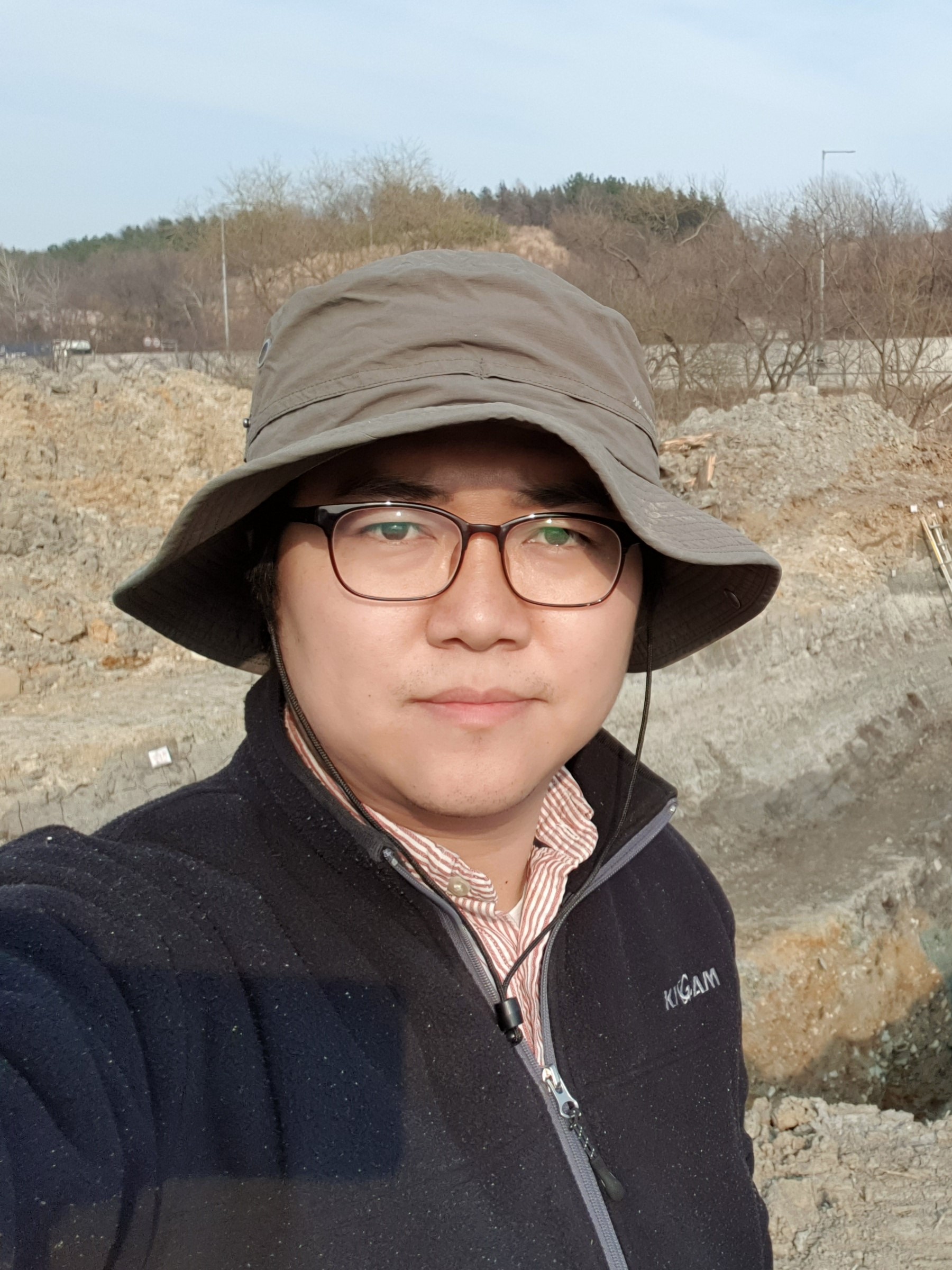

*Attend these AOGS2021 Webinars Free! – Registered Attendees Only
All AOGS e-news subscribers are eligible to attend. Please help us forward this information to your friends and
professional contacts. If not yet a subscriber, they need sign up for an account on MARS to receive
the complimentary invite. Not yet a subscriber?
Sign up Here to Receive Your Complimentary Invitation
Axford Lectures | Medal Lectures | Section Distinguished Lectures
All times shown are Singapore Standard Time (GMT+8)
| SE Section Lectures & Meeting | Room: WB1 |
| Transition | 13:00– 13:30 |
| SE Kamide Lecture | 13:30 – 14:15 |
| SE Distinguished Lecture | 14:15 – 15:00 |
| SE Section Meeting | 15:00 – 16:00 |

Thu-05 Aug, 13:00 – 16:00, Room: WB1
Kamide Lecture - SE (Save a seat)
“Segmentation of intraplate strike-slip fault system: a case study of the Yangsan Fault in SE Korea”
Jin-Hyuck CHOI
Korea Institute of Geoscience and Mineral Resources
A large part of tectonic deformation is accommodated by reactivation of inherited structures, and one of the finest examples is recurrences of large earthquakes on major active faults that have been evolved from older geologic structures. Surface ruptures associated with large earthquakes are, in general, geometrically complex (e.g. fault jogs, branching ruptures, and off-fault cracks), and this could be attributed to configuration of the structural inheritances during the earthquake slip. Segment geometry in a given active fault system is one of the most important structural inheritances, because boundaries between two neighboring segments play a critical role on whether an earthquake rupture propagates or terminates during earthquake slip. Therefore, to investigate segmentation is one of the essential tools to understand cycle models of large earthquakes.
In intraplate setting, however, it is not easy to investigate fault segmentation due to an absence of surface rupture associated with historical earthquakes. It is extremely hard to trace clear morphotectonic expressions due to fault scarp is commonly eroded out and/or covered by young sediments. Nevertheless, earthquake hazard assessments in intraplate regions become more important since many casualties and damages could result from potential large earthquakes due to poor condition of hazard response system. Here we investigate segment geometry of the Yangsan Fault, one of the major active faults in SE Korea, which has no historical records of surface faulting.
Yangsan Fault is about 180-km-long on land, with a finite right-lateral offset inferred to be more than 20 km.
In the last 25 years, surface ruptures associated with the Quaternary earthquakes have been recognized at more than 25 sites along the Yangsan Fault. However, it is not easy to trace the Yangsan fault due to absences of geomorphic offset associated with paleo-earthquakes. Note that rivers flow along significant sections of the Yangsan Fault, and most of the fault sections are covered by young sediments associated with rivers. Here we investigate both geomorphic patterns, such as river systems, and geologic features, such as rock types and structural patterns, along the Yangsan Fault Valley. Also we examine drilling core across the covered fault line and geophysical surveys to detect sub-surface fault zone. In this stage we focus on along-fault variations on geomorphic and geologic features, including geometrical bending, stepping, and branching of the fault to determine inter-segment zones. Our preliminary results indicate that flowing directions of streams along the fault valley are abruptly opposite at some areas. In these areas, together with geomorphic variations, geologic inheritances are also heterogeneous as follows: 1) rock types are abruptly changed, and 2) faults are structurally discontinued. The spatial correlations between these features suggest that the Yangsan fault consists of several distinguishable segments. In further study, it is needed to evaluate in detail the criteria of inter-segments zone, and this will be useful to assess earthquake hazards in intraplate regions.
Biography
My investigation is focus on the research fields of active tectonics and paleoseismology to understand the earthquake cycle in a given active fault system. In particular, I am trying to understand the roles of inherited geology on earthquake rupture processes and/or recurrences for the intraplate strike-slip fault systems.
EDUCATION / POSITION
2017–Present: Senior researcher, Center for Active Tectonics, Geology Division, Korea Institute of Geoscience and Mineral Resources (KIGAM), Republic of Korea
2014–2017: Postdoctoral Research Geologist, Lithosphere Tectonics and Mechanics, Institut de Physique du Globe de Paris (IPGP), France
2014 Ph.D.: Structural Geology and Active Tectonics, Department of Earth & Environmental Sciences, Pukyong National University, Busan, Korea
2010 M.S.: Structural Geology, Department of Environmental Geosciences, Pukyong National University, Busan, Korea
2008 B.S.: Geology, Department of Environmental Geosciences, Pukyong National University, Busan, Korea
RESEARCH EXPERIENCE
2017-Present (KIGAM)
- Airborne-LiDAR-based active fault mapping and paleoseismology for the southwestern part of the Yangsan Fault System in S. Korea.
- Active fault mapping, paleoseismology, and seismic hazard assessments for the Central Yangsan Fault, covered with young sediments, in S. Korea.
2014–2017 (IPGP), Postdoctoral Research (collaborator: Yann Klinger)
- Geologic and structural controls on coseismic earthquake rupture processes, a case study for the 1905 M ≥ 8 Tsetserleg-Bulnay earthquake sequence in Mongolia.
- Impacts of fault geometry, such as fault jogs, bends, and branches, on long-term earthquake rupture scenario for strike-slip earthquakes.